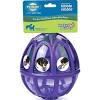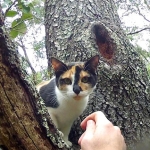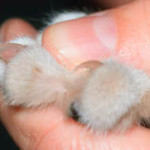Food puzzles are gaining in popularity and are an excellent way to both provide nutrition and enrichment, as well as exercise, for your dog or cat. The benefits of this stimulation are physical and mental.
While so many of us work out of the home, dogs and cats are left alone with limited stimuli during the day. Pet housemates and toys can help, but many animals get bored of toys and refrain from playing with housemates when human family members are not around to share in the play. This can lead to boredom, which may lead to aggression to those housemates, and sometimes owners, in addition to furniture and household item destruction. Anxiety issues manifest as well, such as separation anxiety.
One of many studies showed that when owners engaged their cats daily in as little as 5 minutes a day in play, they reported fewer behavior-related issues. The two most frequently reported behavioral problems were aggression toward the owner, and inappropriate urination.
Boredom-related eating can result in obesity, particularly when combined with decreased activity levels. Animals evolved to acquire their food through activity such as hunting, scavenging or grazing. In the wild, canids such as wolves, foxes and coyotes can spend up to 60% of their day searching for food. We have all seen dogs and cats engage in hunting behavior, such as chasing balls or a cat stalking a toy mouse. Walking over to a food bowl is easy and non-stimulating.
Feeding puzzles slow down the eating process, while forcing pets to be active, and to think. There are many commercially available varieties to choose from, such as from Kong, Nina Ottoson, and Premier. Most are available online and in pet stores. Some are relatively simple food scattering toys that force them to “hunt” it, while others are models requiring problem solving. You may also try making your own versions at home. Cats do well with feeding puzzles, since they tend to prefer to eat in multiple small meals daily. You may find that they engage with one type of puzzle more than another. Don’t give up on the first try. Once they take to it, they will access only a couple of kibbles at a time, mimicking what they tend to do with dry food. Dogs will be forced to slow down mealtime. They are also a great way for dogs to obtain treats. They can be used to train a dog, using the puzzle and treat as reward.
There are some toys, such as Kong toys, that are hollow rubber, where soft food or treats can be stuffed inside. This is a simple toy, and a hungry dog will work diligently at getting the food. Freezing the food inserted will further slow down the eating process. Peanut butter is great, but can be messy, so use this in a crate or non-carpeted room.
Check out these resources for DIY puzzles:
CAT PUZZLE FEEDER
purinaone.com/cats/enrich-feeding-time-for-your-cat-make-a-puzzle-feeder
catbehaviorassociates.com/why-does-my-cat-need-a-puzzle-feeder/
DOG DIY TOYS AND PUZZLES
livewellnetwork.com/deals/episodes/Make-Your-Own-DIY-Dog-Toys-and-Puzzles/9498449
rover-time.com/six-diy-food-puzzles-stuff-around-house/
Always have a selection of puzzles and toys, as dogs and cats will get bored with the same thing each day, and thus defeat the purpose.!
Dr. Dawn









